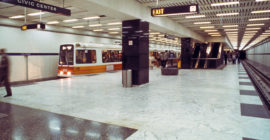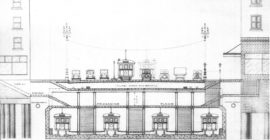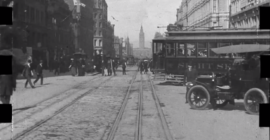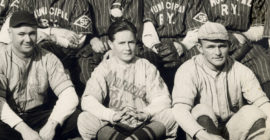The idea of a transit subway under Market Street goes back to the first years of the 20th century, but it took more than 70 fitful years to become reality. That’s a complex and fascinating story we tell in this companion post, which explains the compromises that harmed Muni’s subway operation from the get-go.
History Features
Market Street subway dreams
Hard for some of us San Franciscans of a certain age to think of the Muni subway under Market Street as a part of history. Because that means that we ourselves…well, you know.
Maya Angelou, streetcar conductor: the full story
The revered poet and novelist Maya Angelou (1928-2014) has attracted growing attention for a job she briefly held as a teenager: streetcar conductor in San Francisco during World War II. Much of what gets tossed about in social media is untrue or only partly true. Here, we turn to her own words from her books and interviews to provide the fullest story possible and correct common misperceptions.
Celebrating F-line enablers this Pride Month
There would be no F-line today without the concerted effort of a group of advocates and enablers in the early 1980s. Many of them were openly gay. No better time to celebrate their achievements than Pride Month.
Take a 1906 “Trip Down Market Street” with experts
April 18, 1906, a date forever seared into San Francisco history. The cataclysmic earthquake and fire divided eras and impressed unforgettable memories on all who experienced it.
Play Ball…the Muni way!
Today is Opening Day at home for the San Francisco Giants, the first time in 18 months they’ll play in front of fans at Oracle Park. Often, sporting events like this feature a live band, though we’re probably not far enough in our reopening for that. But we can look back to such days, not just for the Giants, but for another San Francisco institution: Muni.
Renting the street
Editor’s note: One hundred years ago—April 1, 1921 (no fooling!)—an old name appeared anew on the San Francisco scene: Market Street Railway Company. There had already been four transit companies bearing that name, dating back to 1860. This incarnation of the name came after a financial reorganization of the city’s dominant transit company, United Railroads, which with its predecessor had consolidated numerous private operators of cable cars, horsecars, and electric streetcars in the preceding 30 years.
St. Patrick’s Day, 1906
Workers of Irish extraction played a major part in laying and maintaining track for United Railroads in 1906. Here’s a crew at work on tracks along Fourth Street, looking north from Bryant. It’s dated March 17, 1906, one month and one day before the earthquake and fire that devastated San Francisco.
Powerhouse goes to the dogs (and cats)!
Another artifact of San Francisco’s transit history has gained new life for a worthy cause. The Market Street Railway Company powerhouse at Bryant and Alameda Streets in the Mission District, build in 1893 and expanded in 1902, opened on March 8 as the city’s new Animal Care & Control Center.
Rise and Fall of United Railroads
Excerpted from a chapter in the forthcoming book by Emiliano Echeverria and Michael Dolgushkin, chronicling the complete history of San Francisco’s dominant transit operator for the first two decades of the 20th century.
Archive: All Posts









